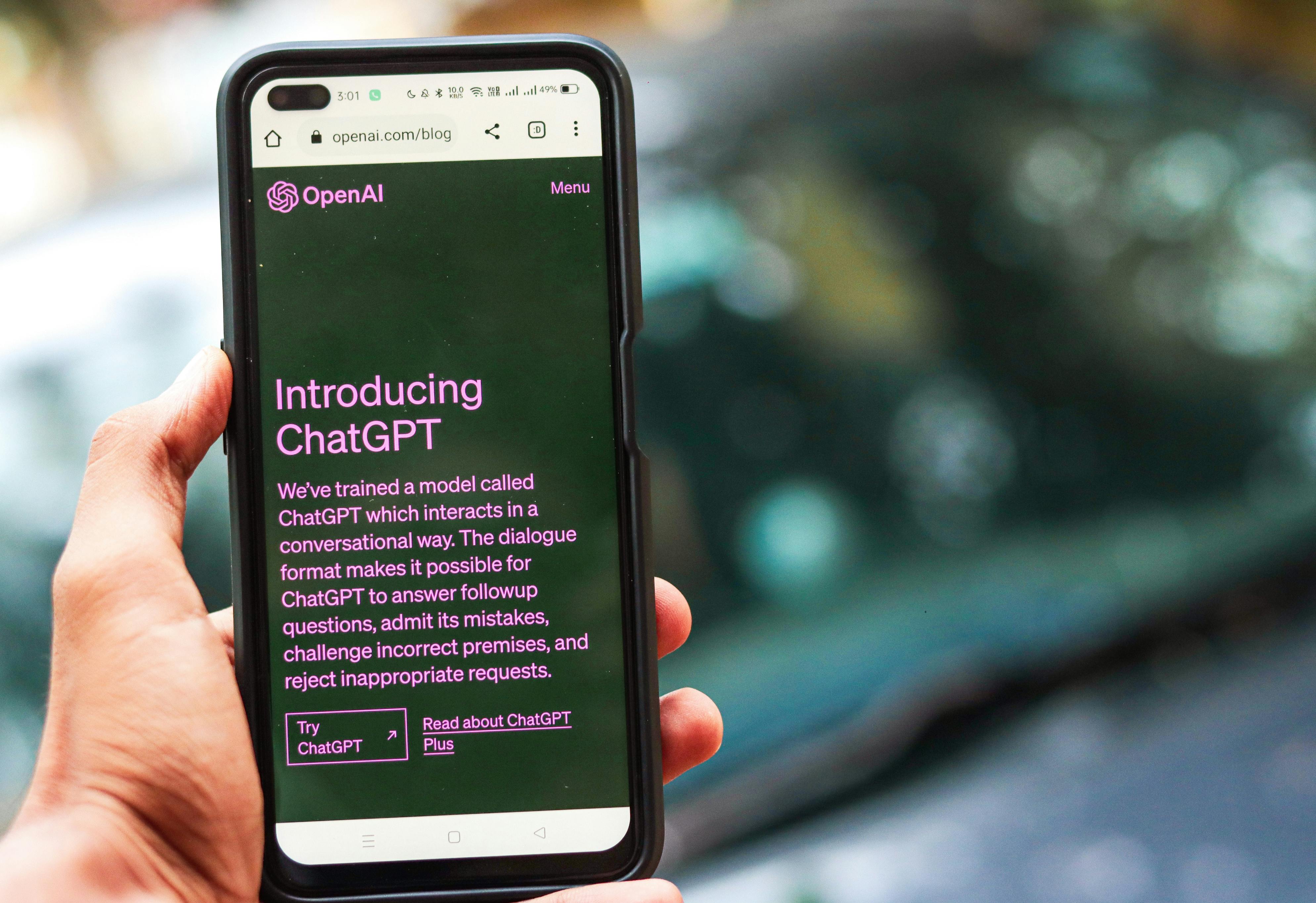How to Build an AI-Ready Leadership Team: What 2025 Leaders Need to Know
AI isn’t a future problem. It’s already here, woven into your workflows, your decisions, and your dashboards. And yet, many leadership teams are still approaching it like it’s a side project.
The truth is: your AI tools are ready. The question is, are your leaders?
If you’re scaling fast, investing in AI systems, or navigating organizational change, your success doesn’t just depend on AI adoption. It depends on whether your leadership team knows how to lead through it. Because this next chapter? It doesn’t belong to the best tools. It belongs to the best people using those tools with clarity, trust, and purpose.
That’s what it means to build an AI-ready leadership team.
Rethink Leadership Identity Before You Roll Out More Tools
The shift AI brings isn’t just technical. It’s cultural, strategic, and deeply personal.
Many managers still lead from control, task expertise, and proximity. But as generative AI, automation, and machine learning speed up how work happens, those old levers become less relevant.
In their place, what matters more are the things no tool can do: coaching, sense-making, ethical decision-making, and building trust across cross-functional teams. That’s the new skill set for modern leadership. That’s the starting point for any serious AI skills development strategy.
Your leaders don’t need to master every model or algorithm. But they do need an understanding of AI systems, what they are, how they work, and where their limits lie. They need a mindset of adaptability, a practice of continuous learning, and the humility to co-create alongside their teams.
In short, they need to evolve, not just upgrade.
Choosing the Right Team Members for the Future
Not everyone on your team needs to be AI-native. But your leadership bench should include adaptable thinkers, open learners, and people who understand the value of AI-driven innovation.
Prioritize leaders who are naturally curious about advancements in digital transformation. Look for candidates who engage with ecosystems of innovation, those who follow developments on LinkedIn, attend webinars, or ask thoughtful questions in meetings about AI capabilities.
And don’t overlook diversity. A homogeneous leadership team increases the risk of biased data decisions. A diverse, cross-functional team brings the perspective needed to use AI ethically and responsibly.

Build AI Literacy Through Hands-On Training and Use Cases
Most companies claim to be future-proofing their team strategies. But they focus on tools, not behaviours.
To truly upskill your leadership team, you need to integrate AI literacy into your culture. Not just with training programs, but through real-time learning loops.
Start by helping managers understand the basics: the difference between artificial intelligence, automation, and machine learning; the function of algorithms; the ethics of data privacy; the promise and pitfalls of AI capabilities. Use real examples of how leveraging AI is affecting customer experience, stakeholder communication, or project manager workflows.
Then move from theory to practice. Assign managers to lead internal AI projects with tangible business goals, like using ChatGPT to prototype a new onboarding experience, or applying Microsoft Copilot to streamline a sales pipeline. These AI initiatives create context and build confidence. They also signal that AI use is part of leadership now, not something to be delegated away.
To support that shift, organizations should invest in structured training programs, especially for managers and directors navigating cross-functional teams. (If you’re not already doubling down on that layer, see Invest in the Middle: Why Manager Development Pays Off the Most for a deeper dive into why it’s the most overlooked, highest-leverage investment you can make).
These programs need to teach more than how to use tools. They should cover AI strategy, relevant technologies, ethical AI use cases, and collaboration frameworks. Bring in data scientists or AI coaches to add depth. Involve product, engineering, and customer success to bridge silos and expand perspectives.
Companies like Microsoft are already investing in programs that upskill the C-suite and middle management alike. You should too. Because when you pair technical exposure with leadership development, you don’t just get tech-savvy managers. You get AI-ready leaders, ones who can leverage these tools with clarity, context, and care.
Redesign Culture Before AI Redesigns You
As AI becomes more integrated, the real risk isn’t technical failure, it’s cultural drift.
When decision-making gets faster and more data-driven, it’s easy to lose the connective tissue that holds teams together: feedback, nuance, trust. When AI tools surface metrics and real-time insights, teams may become more efficient, but also more isolated. And when automation handles the “what,” managers forget to lead through the “why.”
That’s why integrating AI in organizational culture must be intentional. Leaders need to name the tension: between speed and empathy, efficiency and inclusion, delegation and accountability.
Create space to talk about it. Facilitate AI check-ins with team members. Ask where AI is helping and where it feels impersonal. Use those conversations to shape your internal AI strategy, one that’s co-created with buy-in and cross-functional collaboration, not dictated top-down from the C-suite.
If you want to protect innovation, safety, and collaboration, your leadership team has to be the glue that holds people together, especially when the systems are pulling them apart.

Use AI to Support, Not Replace, Core Leadership Work
The biggest mistake we see? Business leaders treat AI like a shortcut to replace human effort when, in reality, it’s a multiplier. If your systems are a mess, AI will multiply the chaos. If your leadership is unclear, it will accelerate misalignment. Many of the patterns in The 9 Most Dangerous Leadership Traps show up even faster in AI-powered teams that haven’t aligned their culture with technology.
But used well, AI can free leaders to focus on what matters most.
Encourage your teams to adopt a “first draft, final say” model. Let AI tools draft reports, summarize data, or suggest project priorities, but ensure your managers remain in charge of the decision-making process. This mindset complements what we teach in Mastering Delegation: How Startup CEOs Can Avoid Decision Fatigue and Scale Faster, because the real leadership work begins after the task is off your plate. Clarity is a leadership responsibility. So is alignment.
Where AI shines is in streamlining. It can optimize workflows, surface performance trends, and help leaders spot friction across teams. But what it can’t do is have the tough conversation. It can’t set the tone, coach in moments of tension, or translate company vision into everyday action.
That’s still the work of your leadership team. That’s where your edge lives.
Scale Intentionally: Design for Growth, Not Just Efficiency
As your business grows, you’ll face pressure to speed up decisions, standardize systems, and automate everything possible. Don’t lose sight of what scales best: people. Specifically, people who know how to use AI to empower, not displace, their teams.
That’s why future-proofing team strategies means embedding leadership into your AI strategy from the start. Treat your AI roadmap like any other strategic pillar. Define your values around ethical use, data transparency, and employee experience. Include key stakeholders from product, marketing, operations, and HR in early design sprints. Invite feedback from end users and team members across functions. Track the right metrics. It’s not just about efficiency gains. It’s about cultural impact. Are your leaders using AI tools to reduce friction or avoid responsibility? Are employees reporting more clarity or more confusion? Are use cases actually aligned with your mission, or just chasing trends?
When you build with intention, AI becomes a lever for trust, alignment, and resilience. Not just output.
Aligning AI Use With Your Mission
Many companies struggle with resistance to AI because teams fear it will dehumanize work. You can counter that by aligning AI use with your core values and mission. For example, in healthcare, AI can enhance diagnostics, but it should still empower patient care. In customer service, AI can streamline requests, but should always elevate the user experience. When employees see how AI supports, not replaces, the mission, they adopt it faster. Link every AI project back to a bigger “why.”
Creating Psychological Safety Around AI Tools
Most employees won’t adopt AI until they feel safe experimenting with it. That’s why AI-ready leadership teams must normalize imperfection and support real-time learning. Offer hands-on workshops where teams can try tools without pressure. Highlight early failures as part of the learning process. Share small wins and reward those who take initiative.
And make AI accessible. Don’t limit it to engineers. Provide entry-level tutorials, simple use cases, and real business examples that show how everyone, from HR to finance, can use AI to optimize their work.
Promote the Right Kind of Leaders
In the past, managers were promoted for their knowledge, speed of execution, or ability to maintain control. But those traits don’t stand out when AI can do the same. What separates great leaders in 2025 will be entirely different: emotional agility, cross-functional fluency, change management skills, and the ability to lead with transparency during disruption. Promote leaders who use AI to improve user experience, not just performance. Elevate those who create psychological safety during transformation. Reward project managers who lead AI initiatives that actually reflect your values.
These are the leaders who will define the culture as you scale. These are the leaders who turn digital transformation into people transformation.

Final Thought: You’re Not Being Automated Out. You’re Being Invited Up.
This isn’t about tools. It never was. It’s about how your leadership team shows up when the playbook changes. It’s about whether your managers understand AI’s potential, and their own. It’s about how well you use technology to clarify, not obscure, the leadership work that still matters.
So yes, invest in AI tools. Build an AI strategy. Train on use cases. Track your metrics. But remember: none of it replaces the role your leaders play in setting the tone, building trust, and guiding the humans in the loop.
You’re not just building a more AI-powered organization. You’re building a more human one.
AI tools will come and go. Your competitive advantage will be the leaders who can evolve with them. That’s what will set you apart.
📚 Want to keep building your leadership edge?
Here are two other reads worth your time:
- The Leadership Lid: How Executives Unknowingly Stall Company Growth
- You Hired the Talent, Now Build the Identity: How to Turn Employees into Leaders
- Decision-Making Techniques and Tools for Leaders and Managers
Because leadership in 2025 won’t be defined by the tools you use, it’ll be defined by how you evolve with them.
Now that you have mastered how to manage conflict - what is your plan of action for making an impact with your team?
Now that you have mastered how to create an environment of empowerment via the 3-P's - what is your plan of action for making an impact with your team?
Developing Your Communication, Empathy and Emotional Intelligence skills is start. What is your plan of action for implementing your learnings within your your team?
Now that you understand the differences in these titles - what is your plan of action for what you learned?
Assessing your team's behaviors is a start - but do you have a plan of action for the results?
Now that you have mastered the art of decision making - what is your plan of action for making an impact with your team?
.png)
A DISC Behavior Assessment is the best way to understand your team's personalities.
Each DISC Assessment includes a Self Assessment and DISC Style evaluation worksheet

-23.avif)







.webp)









